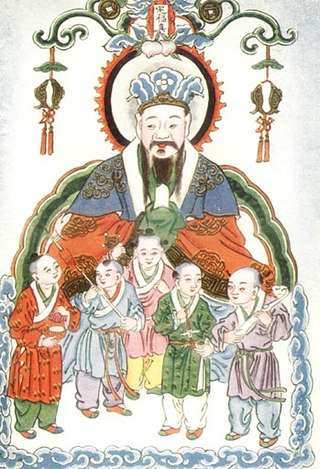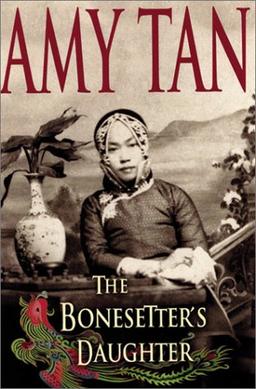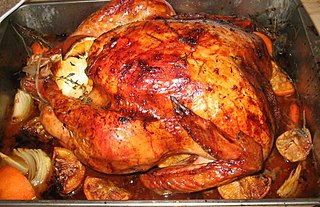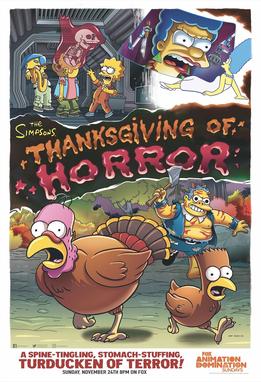Related Research Articles

Amy Ruth Tan is an American author of Chinese heritage, best known for the novel The Joy Luck Club (1989), which was adapted into a 1993 film. She is also known for other novels, short story collections, children's books, and a memoir.
Supper was originally a secondary lighter evening meal. The main meal of the day, called dinner, used to be served closer to what is known as lunchtime, around the middle of the day, but crept later over the centuries, mostly over the course of the 19th century. When dinner was still at the early time, eating a lighter supper in the evening was very common; it was not always the last meal of the day, as there might be a tea later. Reflecting the typical custom of 17th century elites, Louis XIV dined at noon, with a supper at 10 p.m. Even when dinner was in the early evening, supper was served at a ball, or after returning from it, and might be after other evening excursions. At an English ball in 1791, supper was served to 140 guests at 1:00 a.m. They would all have had dinner at home many hours earlier, before coming out. Other, grander, balls served supper even later, up to 3:30 a.m., at a London ball given in 1811 by the Duchess of Bedford.
Dinner usually refers to what is in many Western cultures the biggest and most formal meal of the day. Historically, the largest meal used to be eaten around midday, and called dinner. Especially among the elite, it gradually migrated to later in the day over the 16th to 19th centuries. The word has different meanings depending on culture, and may mean a meal of any size eaten at any time of day. In particular, it is still sometimes used for a meal at noon or in the early afternoon on special occasions, such as a Christmas dinner. In hot climates, the main meal is more likely to be eaten in the evening, after the temperature has fallen.

The kitchen deity – also known as the Stove God, named Zao Jun, Zao Shen, Tsao Chun, Zao kimjah, Cokimjah or Zhang Lang – is the most important of a plethora of Chinese domestic gods that protect the hearth and family. The Kitchen God is recognized in Chinese folk religion, Chinese mythology, and Taoism. Under different names, he is also celebrated in several other Asian religions.

The Bonesetter's Daughter, published in 2001, is Amy Tan's fourth novel. Like much of Tan's work, this book deals with the relationship between an American-born Chinese woman and her immigrant mother.

Service à la française is the practice of serving various dishes of a meal at the same time, with the diners helping themselves from the serving dishes. That contrasts to service à la russe in which dishes are brought to the table sequentially and served individually, portioned by servants.

The Joy Luck Club is a 1989 novel written by Amy Tan. It focuses on four Chinese immigrant families in San Francisco who start a club known as The Joy Luck Club, playing the Chinese game of mahjong for money while feasting on a variety of foods. The book is structured similarly to a mahjong game, with four parts divided into four sections to create sixteen chapters. The three mothers and four daughters share stories about their lives in the form of short vignettes. Each part is preceded by a parable relating to the themes within that section.
Norwegian cuisine in its traditional form is based largely on the raw materials readily available in Norway and its mountains, wilderness, and coast. It differs in many respects from continental cuisine through the stronger focus on game and fish. Many of the traditional dishes are the result of using conserved materials, necessary because of the long winters.

Garfield's Thanksgiving is a 1989 American animated television special based on the Garfield comic strip. It once again featured Lorenzo Music as the voice of Garfield. The special was first broadcast November 22, 1989 on CBS and was nominated for Outstanding Animated Program at the 42nd Primetime Emmy Awards. The events of the special take place during the second season of Garfield and Friends. It has been released on both VHS and DVD home video. On overseas DVD copies of Garfield's Holiday Celebrations, this special is replaced with Garfield in the Rough.

Christmas dinner is a meal traditionally eaten at Christmas. This meal can take place any time from the evening of Christmas Eve to the evening of Christmas Day itself. The meals are often particularly rich and substantial, in the tradition of the Christian feast day celebration, and form a significant part of gatherings held to celebrate the arrival of Christmastide. In many cases, there is a ritual element to the meal related to the religious celebration, such as the saying of grace.
The historical form of service à la russe is a manner of dining with courses brought to the table sequentially, and the food portioned on individual plates by the waiter. It contrasts with the older service à la française, based on several courses brought to the table simultaneously, in an impressive display of tureens and serving dishes, with diners plating food themselves.

The Joy Luck Club is a 1993 American drama film about the relationships between Chinese-American women and their Chinese immigrant mothers. It was directed by Wayne Wang and stars Tsai Chin, Kieu Chinh, Lisa Lu, France Nuyen, Rosalind Chao, Lauren Tom, Tamlyn Tomita, and Ming-Na Wen. The film is based on the 1989 novel of the same name by Amy Tan, who co-wrote the screenplay with Ronald Bass. The film was produced by Bass, Tan, Wang, and Patrick Markey, while Oliver Stone served as an executive producer. Four older women, all Chinese immigrants living in San Francisco, meet regularly to play mahjong, eat, and tell stories. Each of these women has an adult Chinese-American daughter. The film reveals the hidden pasts of the older women and their daughters, and how their lives are shaped by the clash of Chinese and American cultures as they strive to understand their family bonds and one another.

Ramona Quimby, Age 8 (1981) is a novel by Beverly Cleary in the Ramona series. Ramona Quimby is in the third grade, now at a new school, and making some new friends. With Beezus in Jr. High and Mr. Quimby going back to college, Ramona feels the pressure with everyone counting on her to manage at school by herself and get along with Willa Jean after school every day. Ramona Quimby, Age 8 was named a Newbery Honor book in 1982.
The Feast of the Seven Fishes is an Italian-American celebration of Christmas Eve with dishes of fish and other seafood. It is not a "feast" in the sense of "holiday", but rather a grand meal. Christmas Eve is a vigil or fasting day, and the abundance of seafood reflects the observance of abstinence from meat until the feast of Christmas Day itself.

The Hundred Secret Senses is a bestselling 1995 novel by Chinese-American writer Amy Tan. It was published by Putnam, and was shortlisted for the 1996 Orange Prize for Fiction. While the story is fictional, it is based on the experiences of Tan and on stories told by her mother.
Lunch is a meal eaten around the middle of the day. It is commonly the second meal of the day, after breakfast, and varies in size by culture and region.

Customs and etiquette in Chinese dining are the traditional behaviors observed while eating in Greater China. Traditional Han customs have spread throughout East Asia to varying degrees, with some regions sharing a few aspects of formal dining, which has ranged from guest seating to paying the bill.

"Thanksgiving of Horror" is the eighth episode of the thirty-first season of the American animated television series The Simpsons, and the 670th episode overall. It aired in the United States on Fox on November 24, 2019. The episode was written by Dan Vebber, and was directed by Rob Oliver.
Victorian cuisine is the cuisine that was widespread in England during the Victorian era.
References
- ↑ Mussari, Mark (2010-09-01). Amy Tan . Marshall Cavendish. p. 27. ISBN 978-0-7614-4127-4.
- 1 2 3 4 5 6 Kevra, Susan K. (2015). "From Raw to Cooked: Amy Tan's "Fish Cheeks" through a Lévi-Straussian Lens". Asian American Literature: Discourses and Pedagogies. 6: 27–32. Retrieved 2 November 2016.
- ↑ McWhorter, Kathleen T. (2005-12-23). Seeing the Pattern: Readings for Successful Writing. Macmillan. pp. 118–121. ISBN 978-0-312-41905-9.
- ↑ The opposite of fate : a book of musings. WorldCat. OCLC 52493386 . Retrieved November 2, 2016– via worldcat.org.
- ↑ Bambrick-Santoyo, Paul (2014). "When students don't meet the bar: help students meet Common Core standards through careful and extensive lesson planning that uses exemplars and anticipates trouble spots". Phi Delta Kappan. 95 (7): 72. Archived from the original on 2017-12-04. Retrieved 2 November 2016.
- ↑ Snodgrass, Mary Ellen (2004-08-26). Amy Tan: A Literary Companion. McFarland. pp. 51, 59, 61, 66, 67. ISBN 978-1-4766-0260-8.
- 1 2 3 4 Cadbury, Vivian C. (2014-02-26). A Taste for Writing: Composition for Culinarians. Cengage Learning. pp. 34–36. ISBN 978-1-133-27791-0.
- 1 2 3 4 5 "Fish Cheeks By Amy Tan, Pride". lcerronens. 2015-06-12. Retrieved 2019-04-29.
- ↑ ""Fish Cheeks" - Monica Khattak HUM 102-013 eFolio". sites.google.com. Retrieved 2019-04-29.